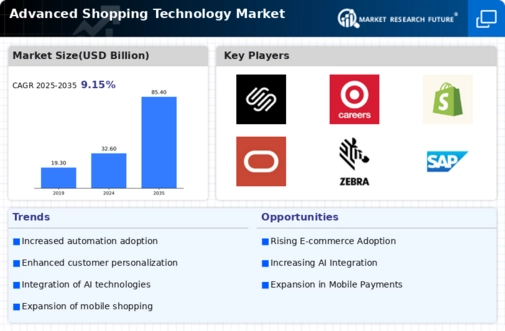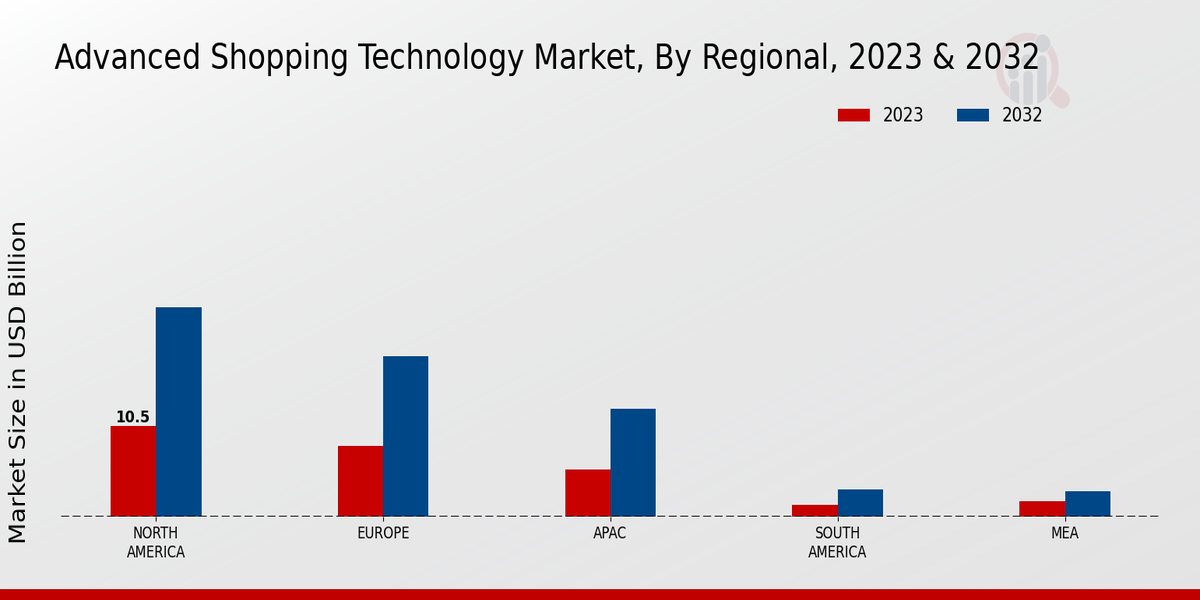Market Growth Projections
Growth of E-commerce Platforms
The rapid expansion of e-commerce platforms significantly influences the Global Advanced Shopping Technology Market Industry. With the increasing number of consumers opting for online shopping, businesses are investing in advanced technologies to enhance their digital storefronts. Features such as chatbots, virtual assistants, and seamless payment options are becoming standard. This trend is underscored by the projected compound annual growth rate of 9.15% from 2025 to 2035, indicating a robust future for the industry. E-commerce platforms that effectively integrate advanced shopping technologies are likely to capture a larger share of the market, responding to the evolving preferences of tech-savvy consumers.
Integration of Augmented Reality
The integration of augmented reality (AR) into the shopping experience is transforming the Global Advanced Shopping Technology Market Industry. AR allows consumers to visualize products in their own environments before making a purchase, thereby reducing uncertainty and enhancing engagement. For instance, furniture retailers are utilizing AR applications to enable customers to see how a piece of furniture would look in their home. This technology not only improves the shopping experience but also contributes to increased conversion rates. As the market evolves, the adoption of AR is expected to play a crucial role in shaping consumer interactions, potentially driving the industry towards a valuation of 85.4 USD Billion by 2035.
Emergence of Contactless Payment Solutions
The emergence of contactless payment solutions is reshaping the Global Advanced Shopping Technology Market Industry. As consumers increasingly prioritize convenience and safety, retailers are adopting technologies that facilitate swift and secure transactions. Contactless payments, including mobile wallets and NFC-enabled cards, are gaining traction, allowing for faster checkouts and enhanced customer experiences. This trend aligns with the broader movement towards digital payment solutions, which are expected to become a standard in retail environments. The adoption of these technologies not only meets consumer expectations but also streamlines operations, potentially contributing to the industry's growth trajectory in the coming years.
Rising Consumer Demand for Personalization
The Global Advanced Shopping Technology Market Industry experiences a notable surge in consumer demand for personalized shopping experiences. As consumers increasingly seek tailored recommendations and customized interactions, retailers are adopting advanced technologies such as artificial intelligence and machine learning to analyze consumer behavior. This shift is reflected in the projected market growth, with the industry expected to reach 32.6 USD Billion in 2024. Retailers leveraging these technologies can enhance customer satisfaction and loyalty, ultimately driving sales. The integration of personalized shopping solutions is likely to become a key differentiator in a competitive landscape, influencing consumer choices and preferences.
Focus on Sustainability and Ethical Shopping
The Global Advanced Shopping Technology Market Industry is witnessing a growing emphasis on sustainability and ethical shopping practices. Consumers are increasingly aware of the environmental and social implications of their purchases, prompting retailers to adopt technologies that promote transparency and sustainability. Innovations such as blockchain for supply chain tracking and eco-friendly product recommendations are becoming more prevalent. This shift not only aligns with consumer values but also enhances brand loyalty. As the market evolves, the integration of sustainable practices is likely to become a critical factor influencing purchasing decisions, thereby shaping the future landscape of the industry.















